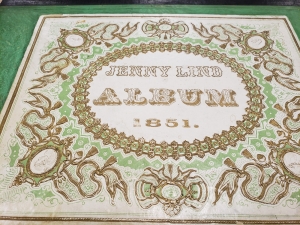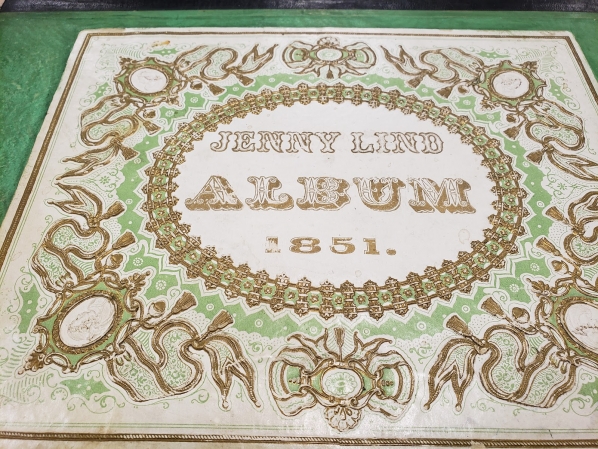Finding something poisonous isn’t unusual when out in nature, there are plenty of plants and animals that are venomous, poisonous, or otherwise toxic in some way. Most would not expect to find poison lurking among the books in the library, but that is something that can be found on the covers of a select number of books.
According to the Winterthur Library, in the early 19th Century publishers and binderies had the option of using a beautiful, brilliant emerald green cloth called, unsurprisingly, Emerald Green. Emerald Green and the similar Scheele’s Green are both toxic colors made using copper and arsenic. In addition to its attractiveness the color was also widely available, meaning that it was a popular choice for coloration in a lot of manufactured goods like clothing, wallpaper, books, and even used to color food!
This is not to say that green was the only toxic color available at the time, there were others. For example yellow could contain both chromium and lead, but green still poses the highest risk to the people handling materials colored with it because of just how toxic arsenic is. Not every green book from the 19th Century is toxic but each suspect book should be handled with care until its status is known.
Some signs that a book may use Scheele’s or Emerald green coloring:
Vibrant green book cloth covering the boards (front and back covers)
Vibrant green or faded brownish-green book cloth on the spine
Gold and blind stamped decoration, often paired with gilt textblock edges
Publication date primarily between 1840s-1860s
Variations on a morocco grain pattern are common, although other bookcloth grains have also been identified
The Winterthur Library advises that if someone believes they have an arsenical green book there are ways to handle the item that can minimize the risk.
Wear nitrile gloves
Wash hands after handling the book, even if gloves were worn
Isolate the book when storing so that it does not contaminate other books. If housing on a shelf with other items a polyethylene bag can be used to contain any colorant flakes or friable materials
Remove book from easy access
Wipe down hard surfaces that the book has touch with a damp, disposable cloth
Early 2023 four faculty and staff members from Appalachian State University Libraries traveled from Boone to the Queen Anne’s Revenge Conservation Lab in Greenville, NC to have five books tested for arsenic.
Harold, the Last of the Saxon Kings displays heavy oxidation across all three volumes, with the spine appearing dark brown from constant exposure to light at some point in its lifetime. However, under the oxidation is a hint of pale green.
The Jenny Lind album displays only slight oxidation of its brilliant emerald green coloring. It should be pointed out that the arsenic in this example is not just limited to the book cloth on the cover but the pale green coloring or ink on the cover image is also arsenical!
Aperçu des États-Unis, au commencement du XIX turned out to not be arsenical, but it certainly confused several people before the test results were returned!
While the Winterthur library guidelines state that books published between the 1840s and the 1860s are the most probable for having toxic green covers, this does not preclude books published early that may have been rebound during that time period.
When confronted with a book of questionable green-ness it pays to err on the side of caution. Arsenic is highly toxic and can do serious long term damage to one’s health.
By Kari Salisbury, Public Services Assistant

